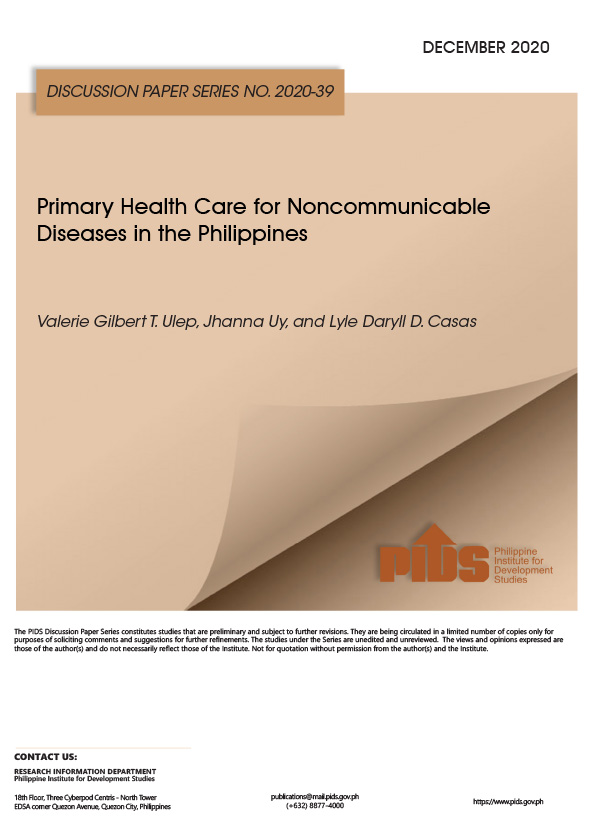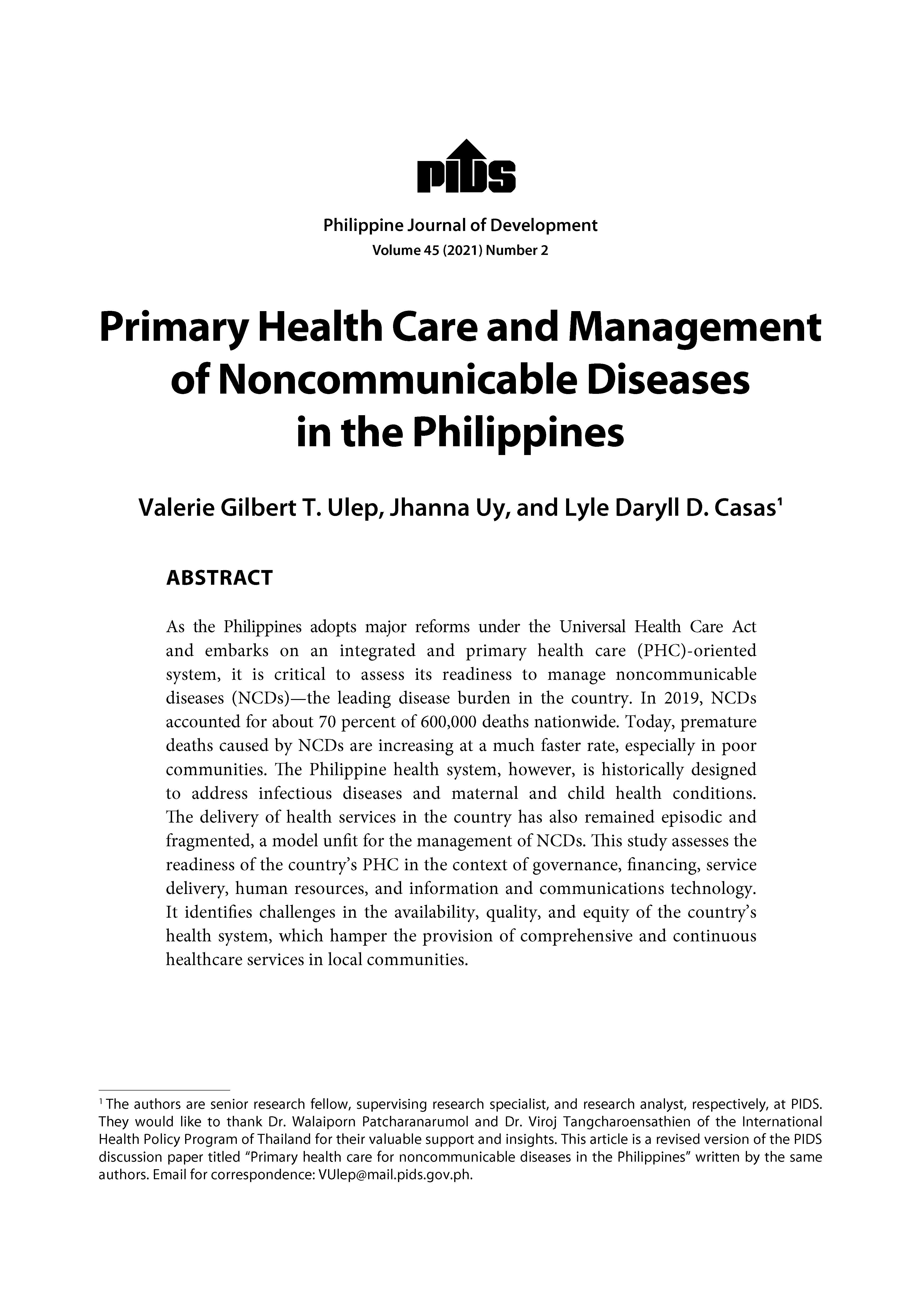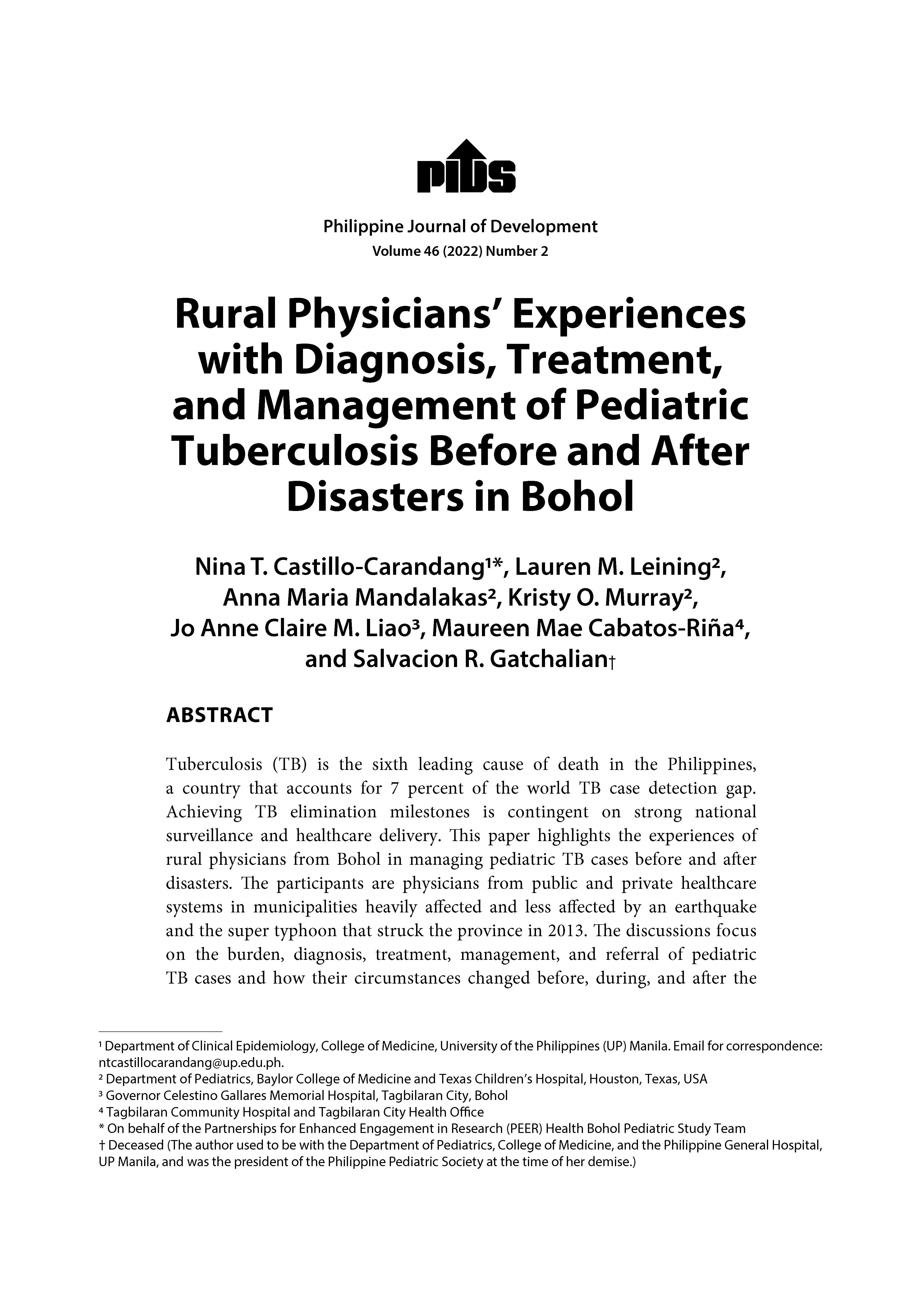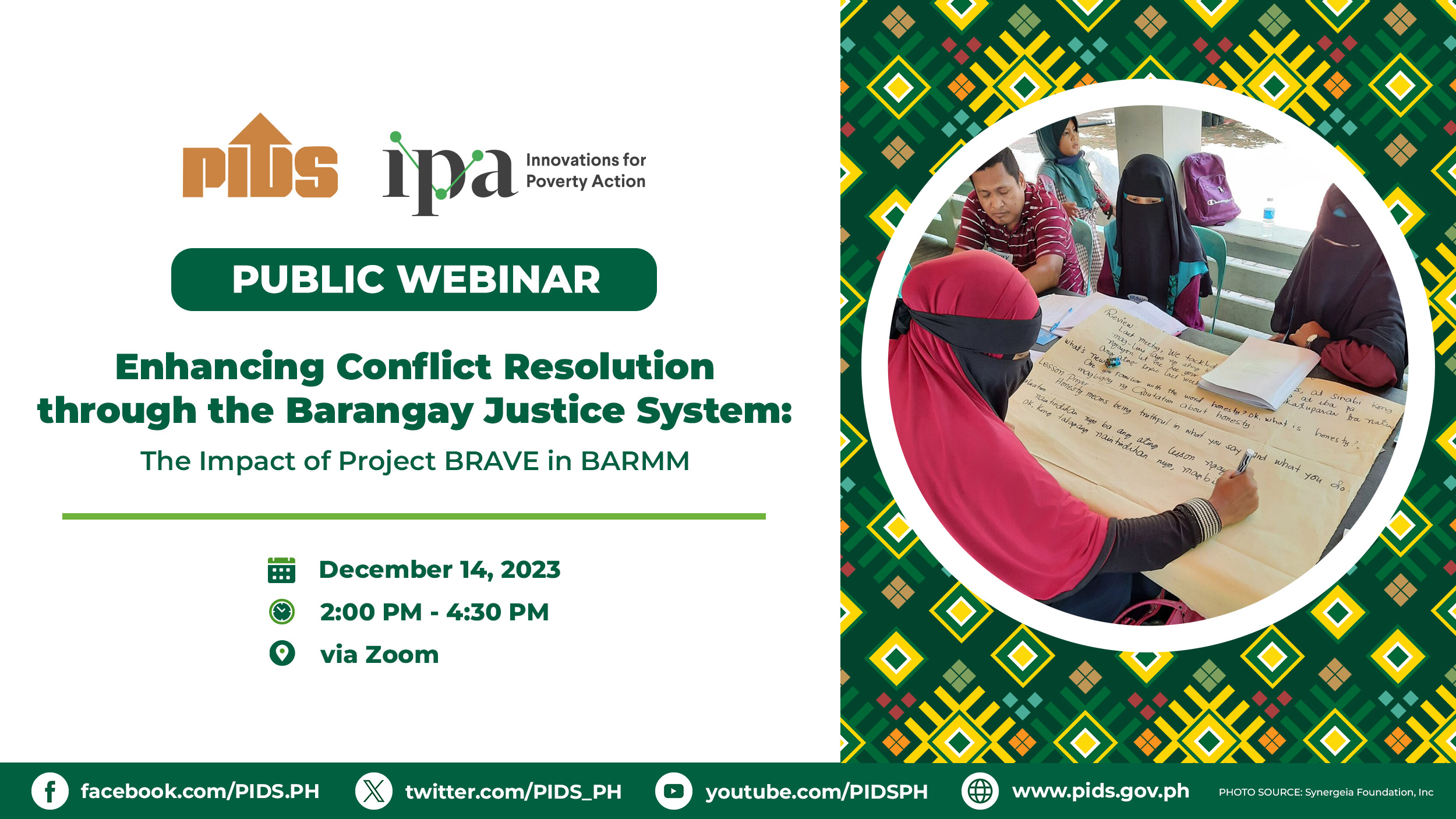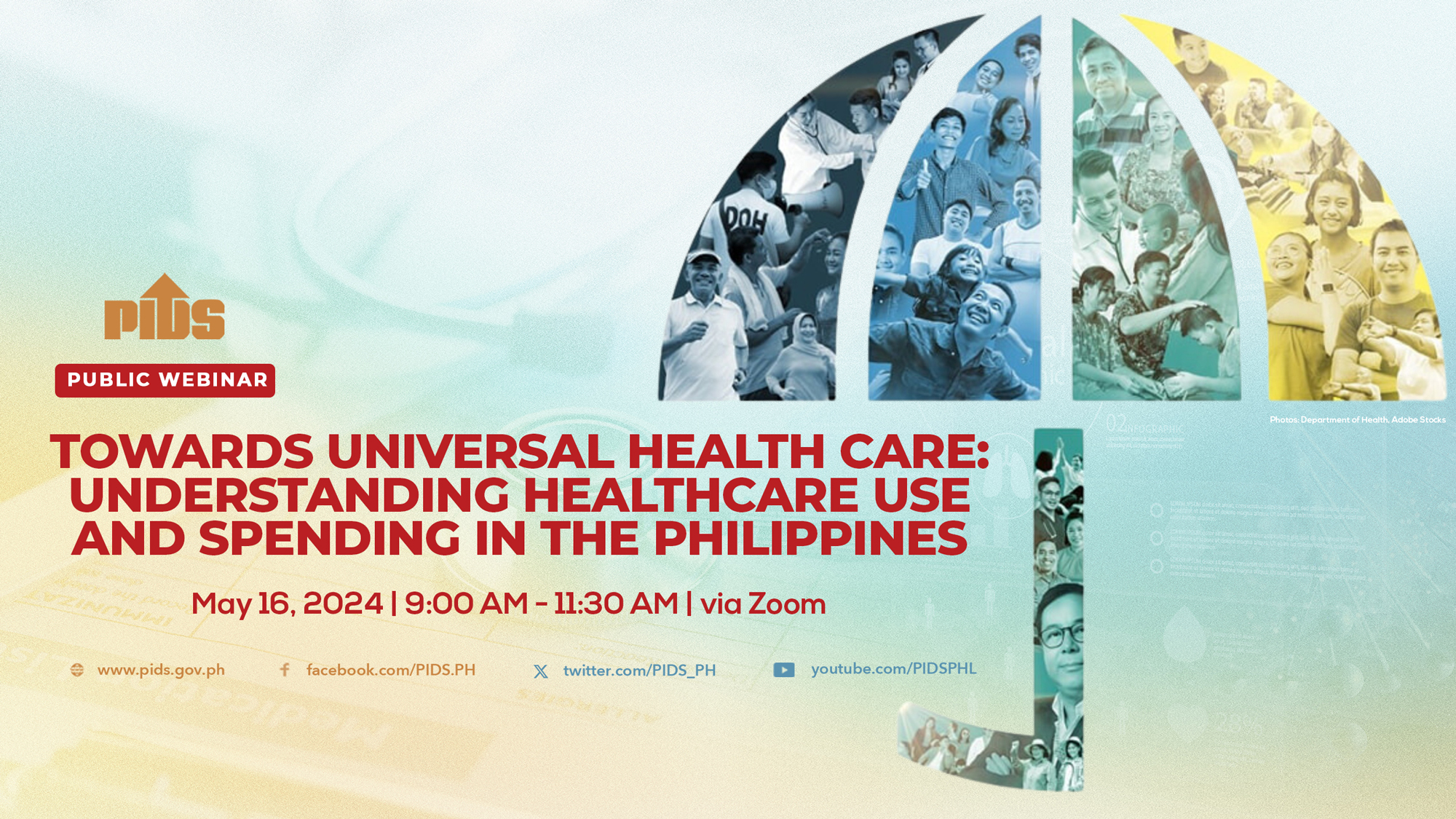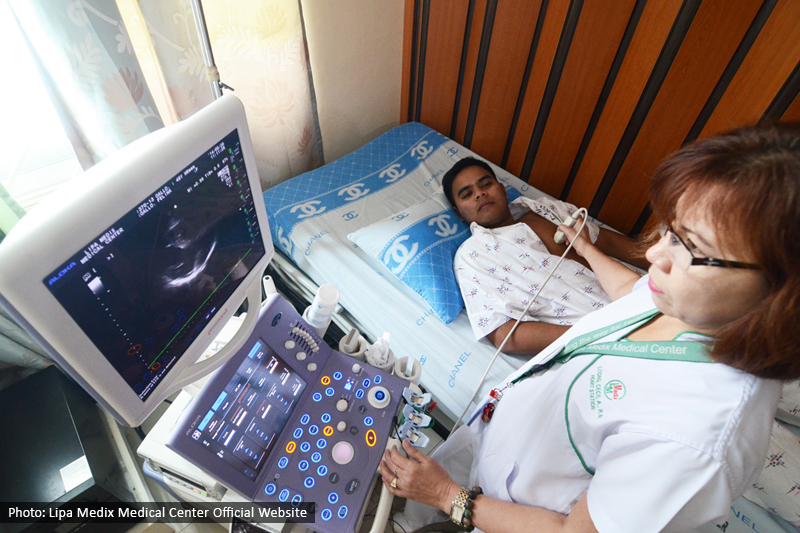
Health system reforms are crucial to address the country’s growing cases of noncommunicable diseases (NCDs), a recent study of state think tank Philippine Institute for Development Studies (PIDS) revealed.
According to authors PIDS Research Fellow Valerie Gilbert Ulep, PIDS Supervising Research Specialist Jhanna Uy, and PIDS Research Analyst Lyle Daryll Casas, NCDs are now the “leading causes of disease burden” in the Philippines.
NCDs are “conditions of long duration and slow progression” such as cancers, chronic respiratory diseases, cardiovascular diseases, and diabetes.
Based on the Institute for Health and Metrics and Evaluation report, the contribution of NCDs to total deaths in the Philippines grew from 39 percent in 1990 to 64 percent in 2019.
Among the country's top NCDs are ischemic heart disease, stroke, chronic kidney disease, diabetes, and low back pain.
The study noted that NCDs are projected to increase in the medium and long term. “Without path-breaking interventions, NCD cases will double by 2040. For instance, the number of Filipinos with hypertension will increase from 14 million in 2020 to 30 million in 2040,” the authors explained.
However, despite the alarming incidence of NCDs, the Philippine health system is not equipped to handle NCDs. It remains historically designed and oriented to treating infectious diseases, and focused on promoting maternal and child health, according to the authors.
Moreover, they pointed out that individual health facilities in different levels operate in silos and lack coordination in clinical, managerial, and financing aspects. “The health system must move away from episodic delivery of care into a more integrated whole-person approach,” the authors suggested.
PHC facilities are also scarce and not very accessible to communities. The national goal is for all Filipinos to have access to a primary health care (PHC) facility within 30 minutes. Currently, the Philippines has 2,600 rural health centers (RHUs). However, based on geospatial analysis, only half of the population has access to RHU within this duration. BARMM, Bicol, and MIMAROPA are the regions with the highest percentage of the population without timely access to RHU.
The World Health Organization noted that a “robust primary healthcare system” is a “critical strategy to address NCDs”. The study also explained that “PHC serves as the point of contact of individuals, families, and communities into the healthcare system.” It also provides “greater access to early management of the disease through first contact, continuous, and integrated healthcare services”.
In terms of funding, only 4 percent of the country’s health spending went to PHC facilities. Based on the 2019 Philippine National Health Accounts, if the country’s health spending is disaggregated by type of healthcare provider, pharmacy accounted for approximately 30 percent; general public hospital, 19 percent; private hospital, 16 percent; and PHC facility; only 4 percent.
There is also a lack of healthcare staff in PHC facilities. A typical RHU needs at least one medical doctor, a nurse, and a midwife. The current supply of primary care physicians is not enough to meet the population's future health needs. Based on the Philippine Health Facility Development Plan (2020-2040), about 50,000 PHC physicians are needed to meet the PHC demand.
Moreover, monitoring and evaluation for NCD services is weak at the local level. RHUs often lack patient management targets (e.g., percent of patients with controlled blood pressure) or indicators to measure NCD interventions' effectiveness.
The authors emphasized the need to address these weaknesses in the healthcare system to beef up the capacity to address the growing threat of NCDs.
Information and communications technology (ICT) should also be utilized in enhancing the business processes and service delivery for NCDs, they added.
The authors also proposed to “accelerate the implementation of the Universal Health Care [UHC] in the Philippines in the context of NCDs where [UHC] envisions a modern, more integrated, and PHC-oriented health system”. ###
This article is based on the Discussion Paper titled “Primary Health Care for Noncommunicable Diseases in the Philippines”.
According to authors PIDS Research Fellow Valerie Gilbert Ulep, PIDS Supervising Research Specialist Jhanna Uy, and PIDS Research Analyst Lyle Daryll Casas, NCDs are now the “leading causes of disease burden” in the Philippines.
NCDs are “conditions of long duration and slow progression” such as cancers, chronic respiratory diseases, cardiovascular diseases, and diabetes.
Based on the Institute for Health and Metrics and Evaluation report, the contribution of NCDs to total deaths in the Philippines grew from 39 percent in 1990 to 64 percent in 2019.
Among the country's top NCDs are ischemic heart disease, stroke, chronic kidney disease, diabetes, and low back pain.
The study noted that NCDs are projected to increase in the medium and long term. “Without path-breaking interventions, NCD cases will double by 2040. For instance, the number of Filipinos with hypertension will increase from 14 million in 2020 to 30 million in 2040,” the authors explained.
However, despite the alarming incidence of NCDs, the Philippine health system is not equipped to handle NCDs. It remains historically designed and oriented to treating infectious diseases, and focused on promoting maternal and child health, according to the authors.
Moreover, they pointed out that individual health facilities in different levels operate in silos and lack coordination in clinical, managerial, and financing aspects. “The health system must move away from episodic delivery of care into a more integrated whole-person approach,” the authors suggested.
PHC facilities are also scarce and not very accessible to communities. The national goal is for all Filipinos to have access to a primary health care (PHC) facility within 30 minutes. Currently, the Philippines has 2,600 rural health centers (RHUs). However, based on geospatial analysis, only half of the population has access to RHU within this duration. BARMM, Bicol, and MIMAROPA are the regions with the highest percentage of the population without timely access to RHU.
The World Health Organization noted that a “robust primary healthcare system” is a “critical strategy to address NCDs”. The study also explained that “PHC serves as the point of contact of individuals, families, and communities into the healthcare system.” It also provides “greater access to early management of the disease through first contact, continuous, and integrated healthcare services”.
In terms of funding, only 4 percent of the country’s health spending went to PHC facilities. Based on the 2019 Philippine National Health Accounts, if the country’s health spending is disaggregated by type of healthcare provider, pharmacy accounted for approximately 30 percent; general public hospital, 19 percent; private hospital, 16 percent; and PHC facility; only 4 percent.
There is also a lack of healthcare staff in PHC facilities. A typical RHU needs at least one medical doctor, a nurse, and a midwife. The current supply of primary care physicians is not enough to meet the population's future health needs. Based on the Philippine Health Facility Development Plan (2020-2040), about 50,000 PHC physicians are needed to meet the PHC demand.
Moreover, monitoring and evaluation for NCD services is weak at the local level. RHUs often lack patient management targets (e.g., percent of patients with controlled blood pressure) or indicators to measure NCD interventions' effectiveness.
The authors emphasized the need to address these weaknesses in the healthcare system to beef up the capacity to address the growing threat of NCDs.
Information and communications technology (ICT) should also be utilized in enhancing the business processes and service delivery for NCDs, they added.
The authors also proposed to “accelerate the implementation of the Universal Health Care [UHC] in the Philippines in the context of NCDs where [UHC] envisions a modern, more integrated, and PHC-oriented health system”. ###
This article is based on the Discussion Paper titled “Primary Health Care for Noncommunicable Diseases in the Philippines”.

